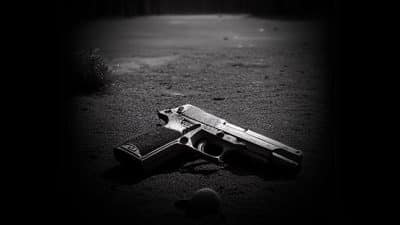Golf Things Considered column by John Rogers
[email protected]
When working with a golfer to improve his swing, one of my favorite methods is to fix the finish. What that means is that we make the finish of the swing, the follow-through, look good. The golfer gets to pose at the end of the swing, imagining, like I tell my junior golfers, that someone is taking a picture for Sports Illustrated. Fix the finish and hold the pose.
But what good does it do to pose after the ball is gone? Isn’t it too late to help the shot? Will a magazine pose at the end of the swing make that disgusting power slice suddenly turn back towards the fairway and carry 30 extra yards? Of course not.
But my thinking is that the finish says a lot about what came before. I don’t know much about gymnastics, but imagine this: A gymnast comes running toward a vault, bounces off of it, flips, pushes off of a pommel horse, flies impressively through the air with another flip and an athletic twist, and then lands, not on two feet, but on another part of the anatomy. A part that shows the original pigmentation of one’s skin, and which, fortunately for the gymnast, has a little extra padding.
My guess is that the gymnast’s poor finish had to do with poor execution earlier in the exercise. Same thing in golf. The finish tells a story of what happened during the swing.
Here’s the thing: What happens between the backswing and the follow-through happens very quickly. The arms and club swing through impact at 100 miles per hour, give or take. It’s very difficult to feel, be aware of, or change anything that occurs during the split second of the downswing. It happens too fast.
For example, imagine a golfer named Flip. He has a habit of hinging his wrists sideways as he’s coming through the ball, making his lead wrist cup towards the target. Flip’s habit will cause the ball to roll along the ground, or possibly fly straight off to the left. And at the finish, there’s that mangled-looking, cupped wrist, the fingers falling off the club as a result of the tortured effort.
It’s easy to explain the problem to Flip, but it’s not so easy for him to stop hinging his wrists that way. It happens too fast (and maybe instinctively, as a way of fixing some other problem). We can walk through the swing in slow motion to practice, and there are learning aids that can help, but there’s another way to make the necessary change.
Here’s how it works: If Flip has the patience to fix his finish after each swing, it teaches him over time which muscles need to relax, and which need to work harder, to finish the way we want. In this case (since Flip is a right-handed player), he will need to relax the muscles in the right forearm, wrist and fingers as he comes through impact. He will need to be more secure in the left hand, and sense that the back of the left wrist stays flat during the shot.
If Flip takes the time to put the hands into better positions after every practice shot, he will train the muscles, and before long he will be able to finish properly. This means he will be coming through the ball with better technique, which means he hits better shots.
This process works for all kinds of swing ailments. If a golfer changes posture during the swing, it will show up in the finish, with the body leaning one way or another. Consistently fixing the finish will eventually force the golfer to stay in posture during the swing.
This reminds me of my friend, Jim Noel, who does a great job providing people with insurance through the company Mutual of Omaha. Jim started taking lessons last year, and has showed up again at the lesson tee this spring. A lot of the effort Jim and I have put into his swing has focused on the positions of the follow-through. Jim had a tendency to finish with his spine tilted towards the target, his wrists buckled the wrong way, and the right shoulder popped up from all the tension.
Most of these things were instinctive corrections for a flaw in Jim’s backswing, which we fixed first, and fairly easily. Then we started to fix the finish. As Jim got better at keeping his spine stable, his hands quiet, and his shoulders relaxed, his contact and ball flight began to improve dramatically. It has taken some time and patience, but Jim’s efforts are definitely paying off. With some attention to the short game, Jim will soon be too strong for his weekend golfing buddies, Scoop and Fargo. That’s a good thing.
Poor weight transfer, flying elbows, lack of rotation, arm and body connection – all of these things can be improved by paying attention to the positions at the conclusion of the swing. It takes patience and practice, but this method is a good way to make swing changes without having to think too hard during the swing.
So – like the gymnast, who gets up off his padded nether-region, assumes the position of a perfect landing, takes a bow, then waves to the crowd – golfers can benefit by fixing their finishes. Sometimes it pays to look good.










